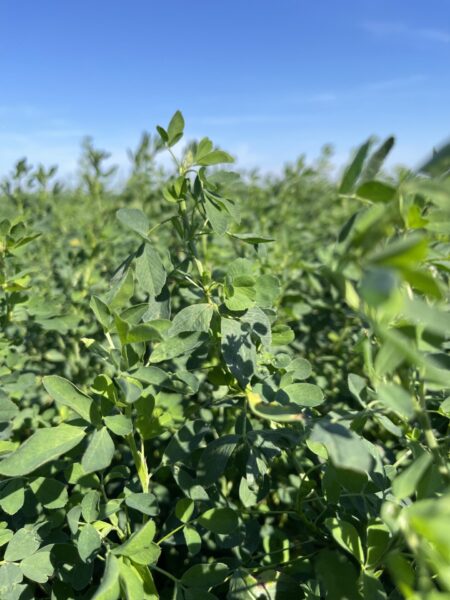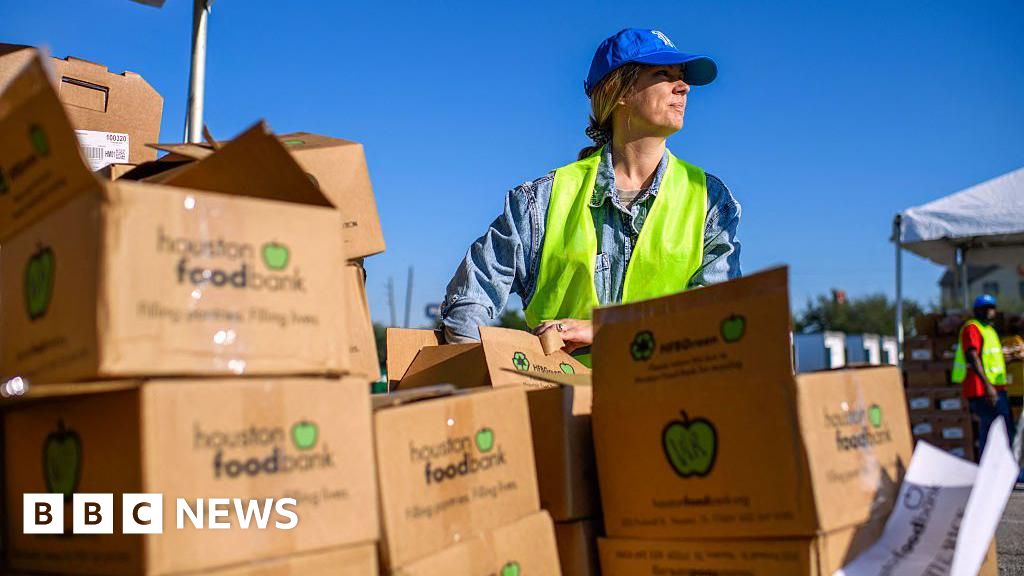Manure injection better for soil health – Brownfield Ag News

Report on Agricultural Practices for Soil Health and Sustainability
Introduction: Low-Disturbance Manure Injection
A report from the University of Wisconsin Extension highlights the significant benefits of adopting low-disturbance manure injection techniques. Research conducted by conservation cropping outreach specialist Chris Bandura indicates that this practice is a superior alternative to traditional surface application followed by tillage. The method directly supports several key United Nations Sustainable Development Goals (SDGs) by preserving soil integrity and optimizing nutrient management.
Core Benefits and Alignment with SDG 15: Life on Land
Minimizing soil disturbance is fundamental to combating land degradation (SDG 15.3). The adoption of low-disturbance manure injection yields multiple benefits for soil ecosystems:
- Reduced Soil Erosion: Tillage exposes topsoil, making it highly vulnerable to erosion from wind and water. By injecting manure directly, the soil structure remains intact, significantly reducing the loss of this vital resource.
- Improved Water Management: Healthy, undisturbed soil exhibits better water infiltration and storage capacity. This enhances resilience to both drought and heavy rainfall, a key aspect of protecting terrestrial ecosystems.
- Enhanced Nutrient Cycling: The practice fosters a healthier soil biome, which improves the natural cycling of nutrients essential for plant life.
Contribution to SDG 2 (Zero Hunger) and SDG 12 (Responsible Production)
Effective nutrient management is critical for achieving food security and establishing sustainable production patterns. Low-disturbance injection is a key strategy in this effort.
- Nutrient Preservation: The method prevents the loss of valuable nutrients, particularly phosphorus. By placing nutrients directly in the root zone, it ensures they are available for crop uptake, contributing to higher yields and supporting SDG 2 (Zero Hunger).
- Efficient Resource Use: This technique embodies the principles of SDG 12 (Responsible Consumption and Production) by turning agricultural waste (manure) into a precisely applied fertilizer. This reduces the need for synthetic fertilizers, which have a significant environmental and carbon footprint.
Impact on SDG 6: Clean Water and Sanitation
The method provides a direct solution to agricultural runoff, a major source of water pollution.
- By injecting manure instead of spreading it on the surface, the risk of nutrient runoff into rivers, lakes, and groundwater is drastically minimized.
- This directly protects water quality and aquatic ecosystems, aligning with the targets of SDG 6 to reduce pollution and protect water-related ecosystems.
Logistical Considerations and Future Outlook
While the benefits are clear, the report acknowledges certain operational challenges. Chris Bandura notes that logistical considerations, such as limitations on the application rate, exist with low-disturbance systems compared to other injection methods. However, despite these minor hurdles, the practice is presented as a great and highly recommended alternative to surface application. Its profound positive impact on soil health and its direct contributions to achieving multiple Sustainable Development Goals position it as a critical practice for the future of sustainable agriculture.
Which SDGs are addressed or connected to the issues highlighted in the article?
-
SDG 2: Zero Hunger
The article’s focus on agricultural practices that “preserve soil and nutrients” and improve “overall soil health” directly relates to creating sustainable food production systems. Healthy soil is fundamental for long-term agricultural productivity and food security.
-
SDG 6: Clean Water and Sanitation
The text highlights that certain farming methods can lead to the “loss of nutrients including phosphorus.” By promoting manure injection to prevent this loss, the article addresses the issue of agricultural runoff, a major source of water pollution that affects water quality in rivers and lakes.
-
SDG 12: Responsible Consumption and Production
Manure is a waste product of livestock farming. The article discusses “low-disturbance manure injection” as a method for the environmentally sound management of this waste. This practice ensures that the nutrients in manure are used effectively on the farm rather than becoming pollutants, aligning with sustainable waste management principles.
-
SDG 15: Life on Land
The core message of the article is to “preserve soil” by “minimizing soil disturbance.” This practice is crucial for combating land degradation. The article explicitly states that tillage “makes soil more vulnerable to erosion losses,” and the proposed alternative improves soil health, directly contributing to the protection and restoration of terrestrial ecosystems.
What specific targets under those SDGs can be identified based on the article’s content?
-
Target 2.4
“By 2030, ensure sustainable food production systems and implement resilient agricultural practices that increase productivity and production, that help maintain ecosystems… and that progressively improve land and soil quality.”
The article directly supports this target by advocating for manure injection, a practice that improves “water infiltration, water storage capacity, nutrient cycling, and overall soil health,” all of which are key components of resilient and sustainable agriculture that improve soil quality.
-
Target 6.3
“By 2030, improve water quality by reducing pollution… and minimizing release of hazardous chemicals and materials…”
This target is addressed through the discussion on preventing the “loss of nutrients including phosphorus.” Phosphorus runoff from surface-applied manure is a significant pollutant. Injecting manure directly into the soil minimizes this runoff, thereby helping to improve the quality of nearby water bodies.
-
Target 12.4
“By 2020, achieve the environmentally sound management of chemicals and all wastes throughout their life cycle… and significantly reduce their release to air, water and soil…”
The article promotes manure injection as a “great alternative to surface (application) followed by tillage.” This represents an environmentally sound management technique for manure (an agricultural waste), reducing its release into the environment as nutrient runoff, which can pollute water and soil.
-
Target 15.3
“By 2030, combat desertification, restore degraded land and soil… and strive to achieve a land degradation-neutral world.”
The recommendation to minimize soil disturbance to reduce “erosion losses” is a direct action to combat land degradation. The article’s focus on preserving and improving soil health contributes to the goal of restoring degraded land and achieving land degradation neutrality.
Are there any indicators mentioned or implied in the article that can be used to measure progress towards the identified targets?
While the article does not cite official SDG indicators, it implies several metrics that can be used to measure progress:
-
Metrics for Soil Health and Land Degradation (Targets 2.4 & 15.3)
The article implies that progress can be measured by monitoring changes in soil condition. Implied indicators include the rate of soil erosion, levels of soil nutrients (like phosphorus), and improvements in “water infiltration” and “water storage capacity.” A reduction in “erosion losses” would be a direct measure of success.
-
Metrics for Water Quality (Target 6.3)
Progress can be measured by tracking the reduction in nutrient pollution. An implied indicator is the amount of nutrient loss from farmland, specifically the “loss of nutrients including phosphorus.” A decrease in phosphorus levels in adjacent water bodies would signify improved water quality.
-
Metrics for Waste Management (Target 12.4)
Progress towards this target can be measured by the adoption rate of the recommended practice. An implied indicator is the number of farmers or the total acreage utilizing “low-disturbance manure injection” as opposed to surface application, indicating a shift towards more environmentally sound waste management.
Create a table with three columns titled ‘SDGs, Targets and Indicators” to present the findings from analyzing the article. In this table, list the Sustainable Development Goals (SDGs), their corresponding targets, and the specific indicators identified in the article.
| SDGs | Targets | Indicators (Implied from the article) |
|---|---|---|
| SDG 2: Zero Hunger | 2.4: Ensure sustainable food production systems and resilient agricultural practices that improve land and soil quality. |
|
| SDG 6: Clean Water and Sanitation | 6.3: Improve water quality by reducing pollution. |
|
| SDG 12: Responsible Consumption and Production | 12.4: Achieve the environmentally sound management of wastes to reduce their release to water and soil. |
|
| SDG 15: Life on Land | 15.3: Combat desertification and restore degraded land and soil. |
|
Source: brownfieldagnews.com

What is Your Reaction?
 Like
0
Like
0
 Dislike
0
Dislike
0
 Love
0
Love
0
 Funny
0
Funny
0
 Angry
0
Angry
0
 Sad
0
Sad
0
 Wow
0
Wow
0













































































